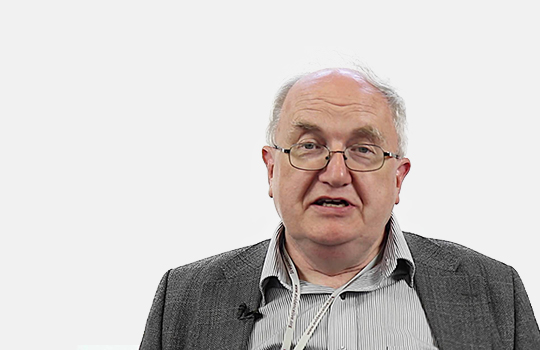Richard Lehman reviews the latest research in the top medical journals
 NEJM 25 Jan 2018 Vol 378
NEJM 25 Jan 2018 Vol 378
New is better for advanced Hodgkin’s?
When Hodgkin’s lymphoma became curable 50 years ago, it seemed that a new dawn had begun in the treatment of cancer. What does the dawn look like now? Bright and sunny for the great majority of people with Hodgkin’s disease who are diagnosed early. But decidedly grey and murky for those who present with stage III or IV disease, as this latest drug trial shows. It was funded by Millennium Pharmaceuticals and Seattle Genetics to test their anti-CD30 antibody-drug conjugate called brentuximab vedotin. It was large—1334 patients with previously stage III/IV untreated disease, recruited from 21 countries. It had an open label design and a composite outcome: “A+AVD had superior efficacy to ABVD in the treatment of patients with advanced-stage Hodgkin’s lymphoma, with a 4.9 percentage point lower combined risk of progression, death, or non complete response and use of subsequent anticancer therapy at two years.” Never mind what the letters stand for. Does this statement give you any idea of the absolute effect size of anything you can discuss with a patient? Oh, and by the way, the cost of this drug alone in the USA is likely to be about $100K per course, never mind the other drugs, treatments and fees. I leave it to Vinay Prasad and Bishal Gayawali to continue the discussion.
New is better for hepatitis C?
Hepatitis C is also one of the great success stories of medicine: a major cause of global mortality which is now completely treatable. It is also, to put it bluntly, a cash cow for the makers of antiviral drugs, sadly meaning that most of those who would benefit haven’t the remotest chance of affording the treatment. That may change if patents expire and cheap generics take over; but that can countered by the introduction of new, more efficacious drugs. In two trials (plus an open-label add-on) AbbVie test out their new glecaprevir–pibrentasvir combination. One trial involved a direct comparison of the new combination with the present standard treatment of sofosbuvir–daclatasvir in people with genotype 3 hep C infection over the traditional 12 weeks. There was no difference. The other arms just compared an 8 week course of the new combo with a 12 week course. Again, no difference. With both this paper and the one above, it would be interesting to know how many reprints will be sold to the sponsoring companies and how they will be used. But the NEJM will not disclose this information. Full marks to Richard Smith for bringing up this murky subject again in his BMJ opinion piece. Based on disclosures by The Lancet, journals can make up to £1 million per paper from reprints sold to manufacturers.
Flu and myocardial infarction
A self-controlled case-series study from Ontario shows that in the week following a positive test for influenza, the risk of admission for myocardial infarction increases by a factor of about 6. It’s quite possible that some other respiratory viruses, such as respiratory syncytial virus, have a similar effect. This is neat work and deserves replication and extension elsewhere.
JAMA 23/30 Jan 2018 Vol 319
Laparoscopic v hysteroscopic sterilization
If you are a woman who has definitely decided to have no more children, what kind of sterilization should you have? Here’s an example of a decision that can be made at leisure between two options: hysteroscopic or laparoscopic tubal occlusion. And this French nationwide cohort study provides the data to underpin the decision: 105, 357 women had the hysteroscopic procedure and 34,054 had the laparoscopic. Granted this was not a randomised trial, but it’s clear that pregnancy outcomes are very similar in the long term. Women who go for hysteroscopy are more likely to have subsequent gynaecological intervention, whereas those who have laparoscopy are more likely to have immediate medical complications. Put this in tabular form and hey, you have an Option Grid.
Trial reporting: deciding as you go along
How long should a clinical trial go on for? In a week when I’ve been praised for my “mastery of the obvious”, I will assert that it should be for as long as it takes to reach a dependable result which can be applied to clinical practice. Obvious, yes: common, no. In this brief, but important research letter, Steven Woloshin and Lisa Schwarz examine the reports of trials which, for one reason or another, reported the interim results from trials which were either stopped or went on to completion. It’s quite a mess, and shows that premature reporting is arbitrary in its selection of outcomes and is capable of misleading clinicians in a fifth of cases. Even when trials are completed, I would say—based on reading every Cochrane abstract for the last four years—that only a minority have the right timescale to inform clinical practice.
JAMA Intern Med Jan 2018
Plaque in the eye of the beholder
We owe big thanks to the person who came up with the amusing term “oculostenotic reflex” to describe the automatic stent-inserting behaviour of interventional cardiologists on seeing a stenosis in a coronary artery. I don’t pretend to understand the Chinese hospital system, but I believe that quite a lot of payment-by-activity goes on there. Here is a study suggesting that this can have visual side-effects. In 35 Chinese hospitals, quantitative angiographic measurement of coronary stenosis demonstrated that 57 physicians using eyeballing alone overestimated severity by a range from 7% to 26%.
Ann Intern Med 23 Jan 2018 Vol 168
Pot luck
“Evidence examining the effect of marijuana on cardiovascular risk factors and outcomes, including stroke and myocardial infarction, is insufficient.” That’s the good strong conclusion of a systematic review of the published English-language literature. I like conclusions which don’t indulge in speculation, but in fact there are strong reasons to presume cardiovascular and other harm from smoking hemp, which produces three times as much tar as tobacco. So now that cannabis use is sensibly being legalized in many places, we need some good prospective studies, for example comparing smoking weed with the use of vaporised cannabis. Is there such a thing as an electronic bong? I think I saw some in Amsterdam recently.
Hypertension guidelines: trying to be patient
This issue of the Annals contains a synopsis of the hypertension guidelines of the American College of Cardiology (ACC), the American Heart Association (AHA), and partner organizations which appeared last November. At the time it came out, I commented: “This guideline sets the threshold at 130mm Hg SBP, and at last introduces the idea of an assessment of total CV risk. But it reclassifies about half the population as ‘hypertensive.’ Here lies a glimmer of hope. When this level of absurdity is reached, people might start questioning the notion of ‘hypertension’ altogether, in favour of seeing how their own BP affects their personal risk. They might want to use an interactive risk calculator, so they can get some idea of the likely benefit to themselves as individuals if they opt for particular lifelong treatments.”
I am glad to see that many people broadly agree, including the Annals commentators, the mighty Harlan Krumholz some weeks back in The BMJ, and others in Nature Reviews who in the past have taken a largely population-based approach. So now the challenge is to produce a really good decision aid for “patients” with “hypertension”. This is going to be really hard work because it involves a fundamental shift of attitude on the part of both health professionals and people with elevated BP. No longer will it be a matter of treating everyone to the same target using a fixed hierarchy of drugs: the choices are complex and need to be individualized.
The BMJ 27 Jan 2018 Vol 360
Pre-op physio prevents chest infections
My earliest medical mentor was George Pickering (1904-1980), a professorial knight of the old school, perhaps best remembered for his ill-tempered spat with Lord Platt who claimed that “hypertension” was a monogenic disease rather than one part of a normally distributed population curve. Time has proved Pickering right. Sir George was also a great disbeliever in chest physiotherapy, but here he was wrong, at least if you use it as prophylaxis rather than treatment. As a 30 minute session given to adults before major elective abdominal surgery in Australia and New Zealand, it halved the rate of postoperative pulmonary complications, especially pneumonia.
Plant of the Week: Mespilus germanica
The medlar was once a common small tree in England, but has become a rare woodlander and an occasional garden subject. It was widely grown for its winter fruits, which need to be “bletted” by frost in order to become edible. I have long dreamt of being served bletted medlars by candlelight with port after dinner in some oak-panelled common room in Oxford, but it has never happened. Apparently the bletted flesh is brown and mushy and tastes of apple sauce.
I’ve thought of growing my own medlar tree, but it is a waste of space unless you have a very big garden, because the medlar offers no interest but its half-rotten fruit. This is like a large kind of rose-hip, split open at its end. Despite its name, Mespilus germanica was a latecomer to Germany and originates from Iran and Turkey: it should really be called Crataegus persica, the Persian hawthorn.
Both Chaucer and Shakespeare make reference to the medlar in ways that are scarcely mentionable. The fruit was known as open-(something) and the reference to it by Mercutio in Act 2 sc 1 of Romeo & Juliet was such as to make even Elizabethans blush. In the first printed quarto of the play it was given as “open-&cetera” and in subsequent quartos and the First Folio the key word is missing altogether. Those wishing to know more can look it up here.
For Chaucer writing the Reeves Tale in his fifties, the medlar was also a reminder of the fact that we don’t really know much about life until we are nearing rottenness. After some discourse on the open-ers fruit he concludes:
We olde men, I drede, so fare we:
Til we be roten, kan we nat be rype.
How true, alas.
